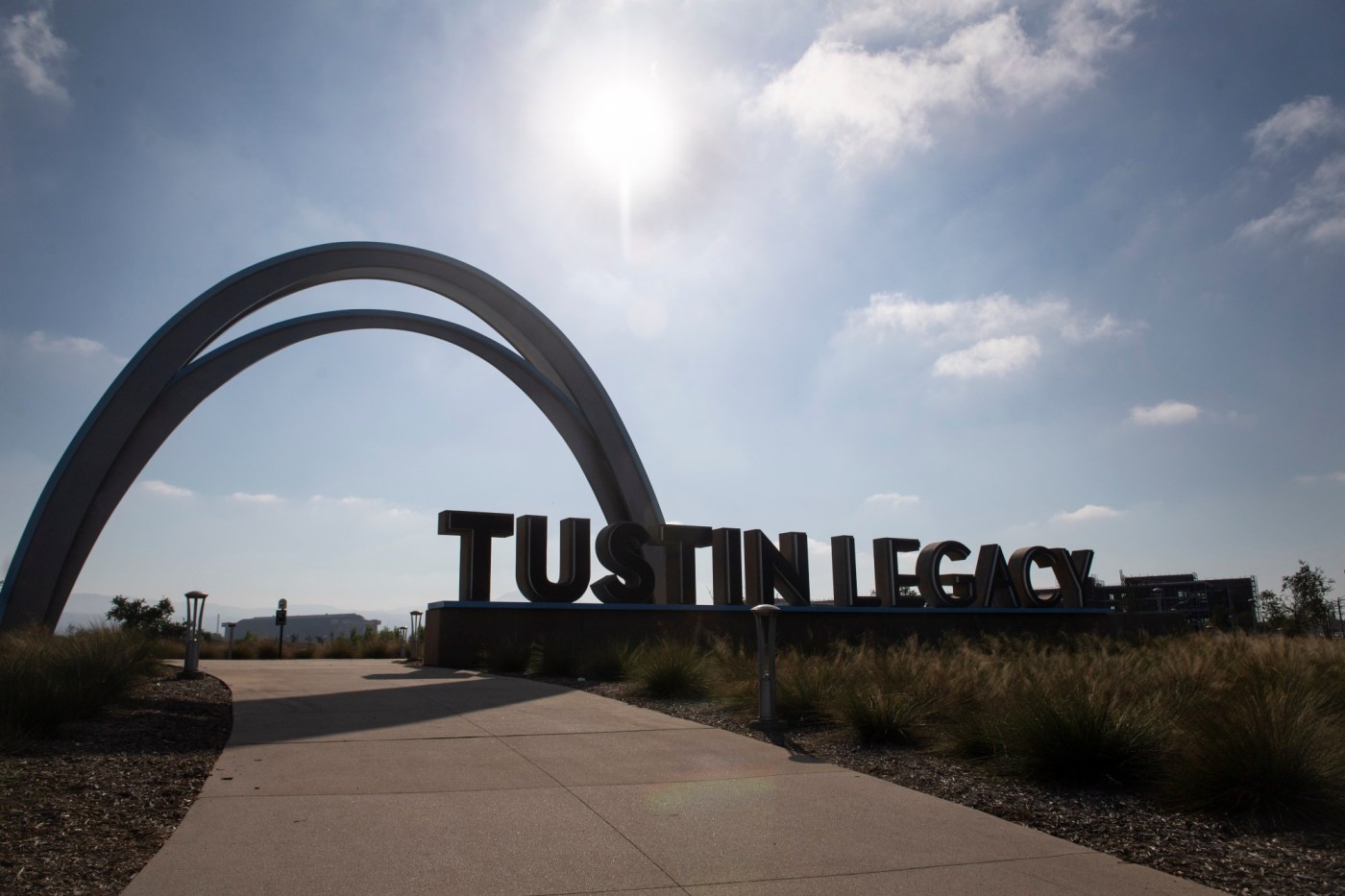Tustin city officials want residents to give their input to help shape what the future of Tustin Legacy should look like, where almost 500 acres of land remain undeveloped in the center of Orange County.
The Tustin Legacy neighborhood was born out of the former Marine Corps Air Station Tustin and totals 1,600 acres. Since the base was closed in 1999, more than 1,000 acres have been developed into new homes, schools, parks, retail areas and more.
City officials say Tustin Legacy is at a juncture to decide how the rest of it is developed, including the key question of what to do with the remaining World War II-era blimp hangar after the north one burned down in 2023.
“The upside, and the potential to do something spectacular and to build a unique community, and a unique destination not only for Tustin but for all of Orange County, is very real,” said Mayor Austin Lumbard.
The Tustin City Council controls how the former base property is reused. Plans to build a county regional park at the north hangar site fell through over the years.
The city will start this month a series of meetings and other community engagement plans to gather input from residents and businesses.
The first community meeting is set for May 13 at the Annex at Tustin Legacy, 15445 Lansdowne Road. The meeting will start at 6 p.m. and residents and other stakeholders are encouraged to attend.
Surveys will also be sent out to residents, officials said, and smaller meetings will be held with neighborhood groups and tours of the Tustin Legacy site offered.
Lumbard said it’s a moment for the city to reset the vision for developing the last parts of the Tustin Legacy based on changing market trends and community desires over the last 25 years.
A major part of the conversation will be what to do with the hangar sites. The burnt north hangar pad is currently being cleaned up by a Navy contractor. The south hangar was in better shape than the north hangar in recent years, and has been used for television commercials and hosting events.
Lumbard said the decision on what to do with those sites will inform what happens with the rest of the Tustin Legacy. If the community doesn’t want to keep the hangar, he said, then the city can go down the path of deconstruction, but that will be costly. But if people want to keep the hangar, then that is a different path of costs to maintain the hangar and not doing something else with the land, he said.
The mayor pitched the idea of a memorial or monument at the north hangar site commemorating the area’s military history. Lumbard said the city has a contractual obligation to redevelop the land as part of the base closure agreement to replace the economic activity that was lost and to plan for more housing as required by the state.
The city has also earned $476 million from selling land, which has been used to build parks and fund road improvements around town.
“I think part of getting valuable and helpful feedback is informing folks of what the situation currently is,” Lumbard said. “A lot of residents understandably think the city just has a blank slate on the Legacy. They don’t realize the Navy still owns some of the land, they don’t realize the complex issues surrounding the hangars … and so we are trying to give this information through as much transparency as we can to help inform their feedback. We want this to be a collaborative process with the community.”
